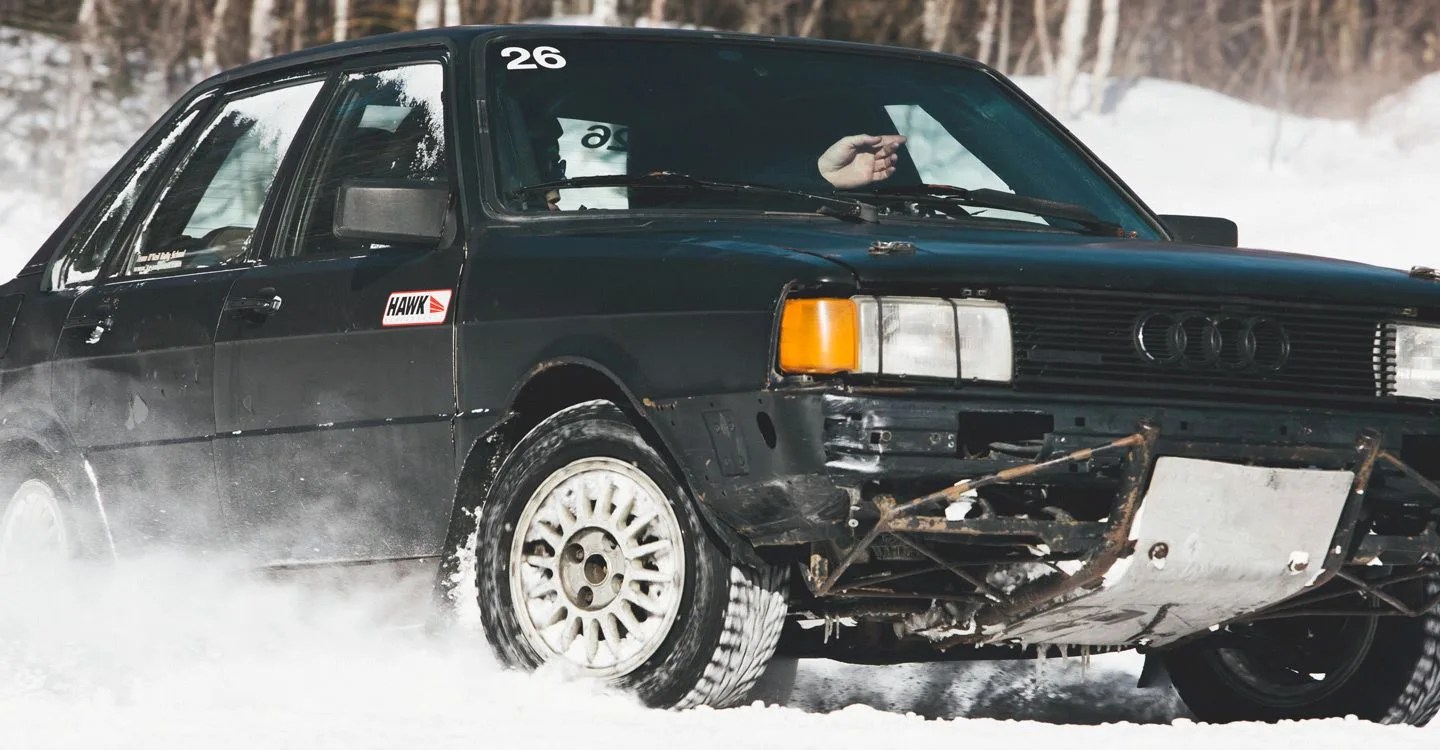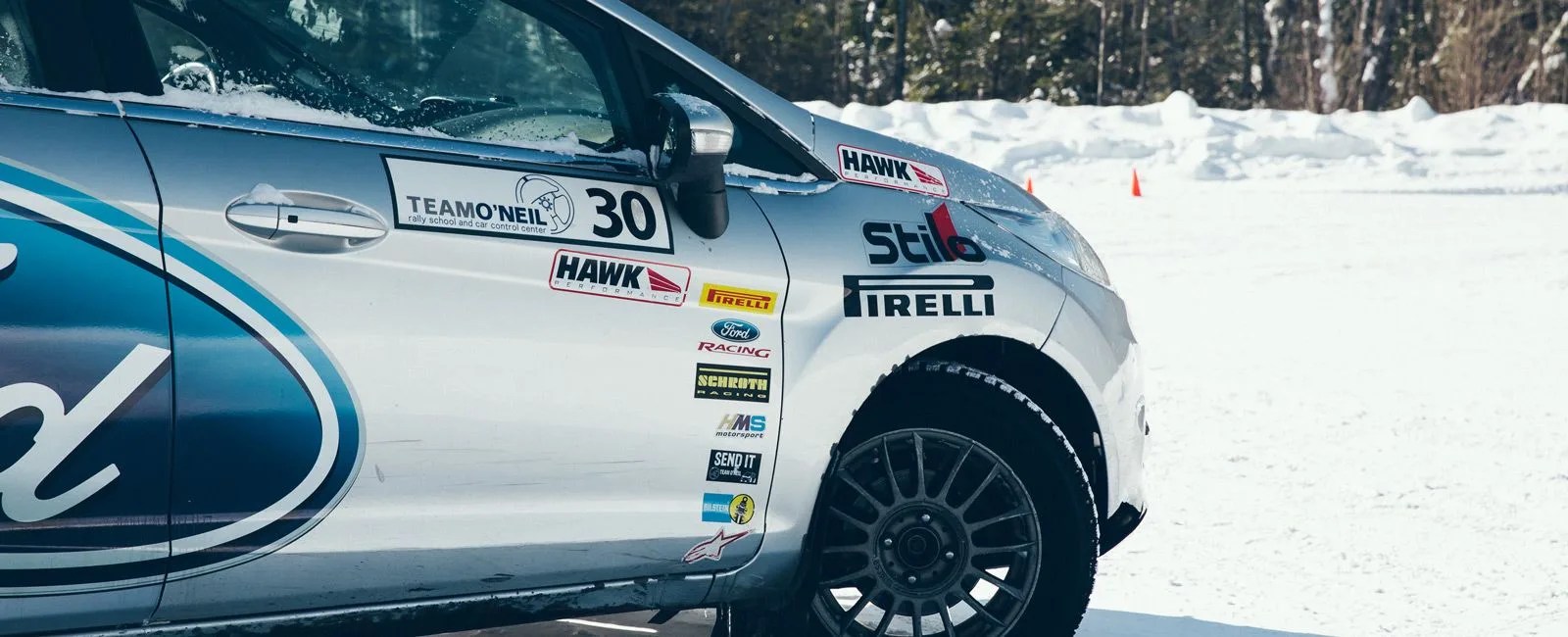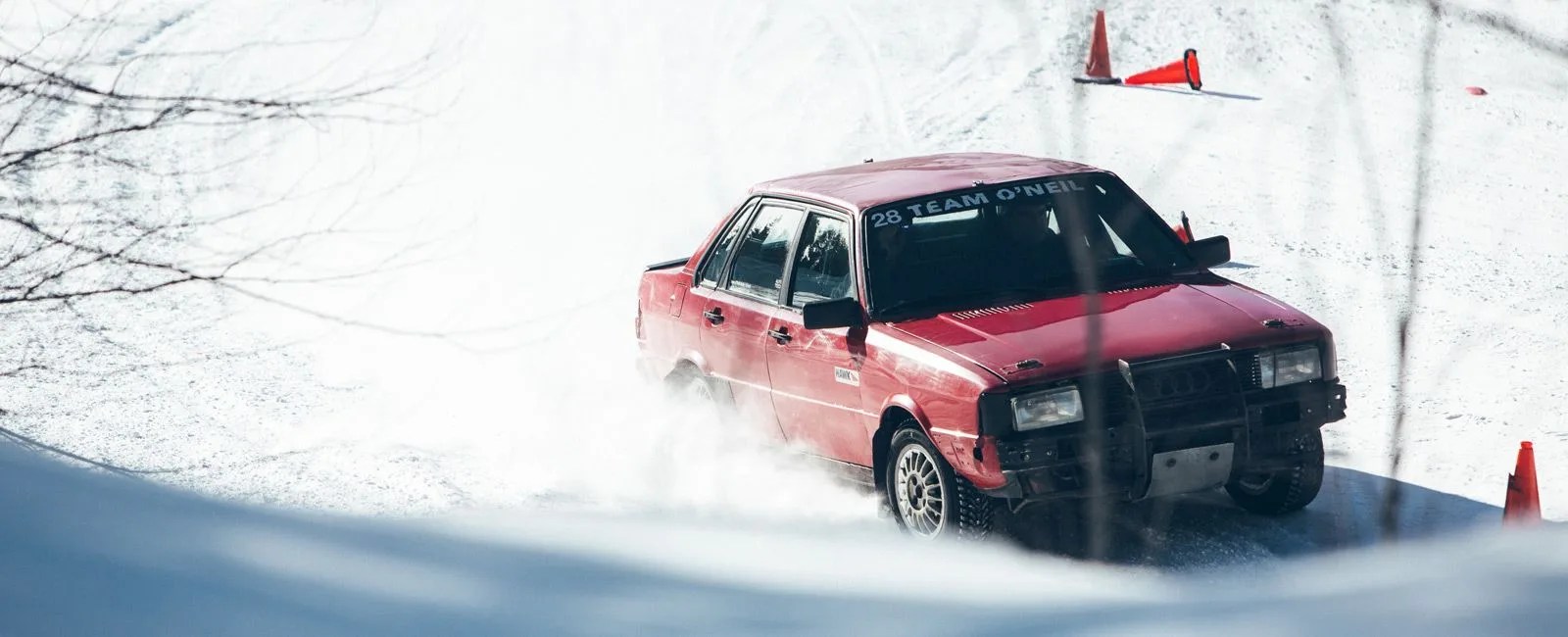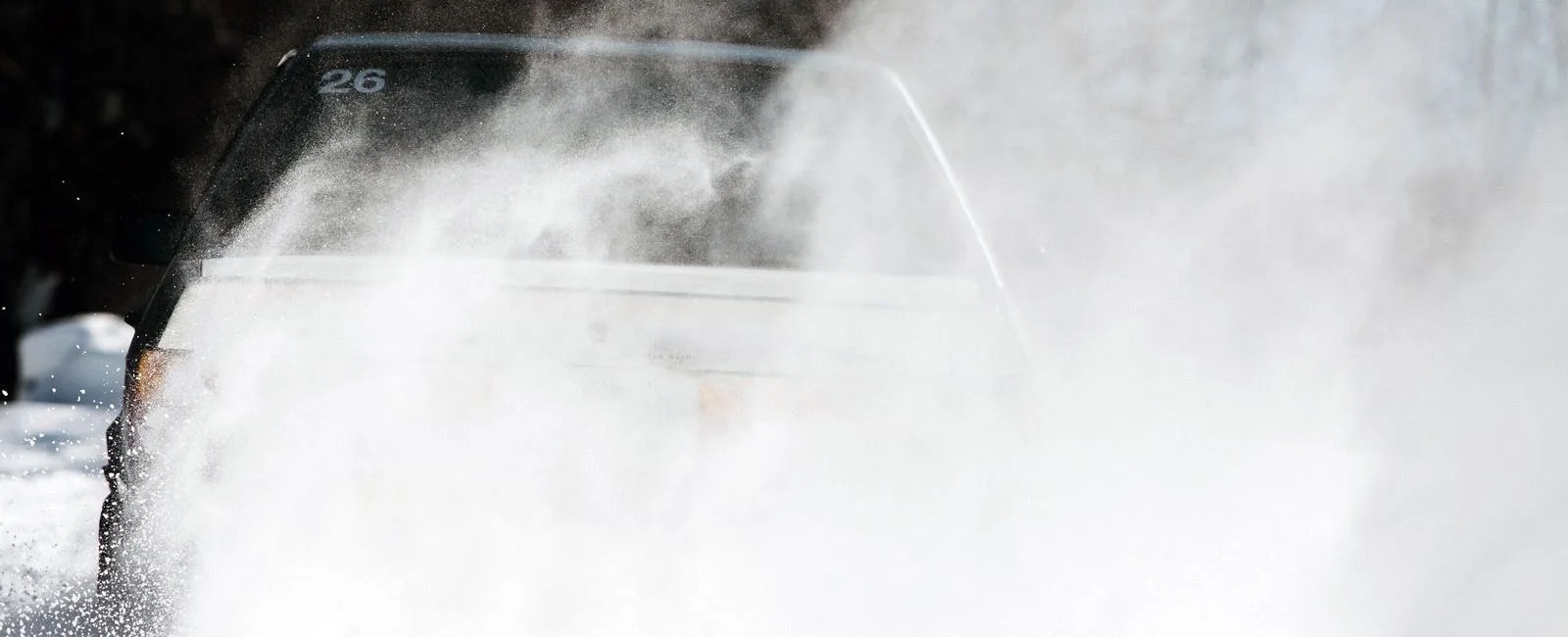Professional rally drivers make motorsport look easy. Tossing a 500-horsepower hatchback through the air at 85 mph, landing and immediately sliding the car sideways around a turn — narrowly missing trees, boulders and spectators (all on snow and ice) — is standard fare. Drivers nearly roll their cars or catch a nasty slide at highway speeds and shake it off like they just dodged a shopping cart in a parking lot. Their car control skills are revered by drivers in all other motorsports, including F1. And I, as a humble journalist with an affinity for driving cars fast, am no exception.
So when the opportunity to attend the Team O’Neil Rally School in New Hampshire for a four-day class came up, it revved the internal engine. New England had just received a few feet of powder and was feeling temperatures well below zero. I’d attended a racing school before, learning car control and driving dynamics, but that was on nice, dry, grip-laden asphalt. The icy New England winter took car control to the next level. I was ready for a schooling.
Rally Terms for the Uninitiated
Scandinavian Flick (Pendulum Turn): A maneuver in which the driver uses aggressive side-to-side weight transfers going into a corner to intentionally create oversteer. When executed properly the resulting drift helps the car get around a corner more quickly on loose surfaces and, as a byproduct, makes the driver look absolutely heroic.
Pacenotes: The list of shorthand descriptions of all of the corners, crests and obstacles the co-driver reads to the driver during a rally. Drivers need to understand these notes while barreling through a forest at highway speeds, so each team has custom abbreviations, which turn into another language all its own. The faster drivers can process notes, the better chance they have of staying on the road and out of a ditch.
Special Stage: Stages marked by closed stretches of public or private roads — ranging from a few miles to more than 20 — that are converted for a rally. It’s not uncommon for special stages to include stints through towns or farmlands where local wildlife has a history of ruining a racer’s day.
Leg: A group of Special Stages that teams will tackle consecutively — i.e., there are no breaks to service the car, regardless of the damage picked up along the way.
Yump: Simply “jump”, pronounced by Scandinavian drivers in broken English.
Crest: The highest point of a hill and a place that blocks the driver’s line of sight. This is where a co-driver’s pace notes come in handy, because crests often lead into blind turns or the aforementioned “yumps”. The better a driver knows what’s coming after a crest, the better he can adjust his driving for when the car goes light at the top.
Throttle Steer: In a rear-wheel-drive car, a driver can intentionally spin the rear wheels to induce a drift and rotate the car. The driver dictates the amount that the car rotates by modulating the throttle through the turn.
Studs: Studs are small metal spikes that are embedded in the tread of the tire to increase grip on ice and snow.
Rebound: Rebound is the speed at which a compressed shock returns to its original position. Fine tuning the rebound rate of a rally car’s suspension is critical to keeping maximum traction on bumpy roads. If the rebound rate is too slow, the wheel can lose contact with the ground and the car can bounce off the road.
Day One: Before you set foot near a car, there’s classroom time. A few rows of seats and tables accompanied the instructor and a white board. Since I was about to get into a car and drive it as fast as I dared in the snow, I was all ears. I wanted to keep these cars out of the ditch. The instructor went over the basics: understeer, oversteer, weight transfer and the characteristics of the FWD Ford Fiesta. He also touched on left-foot braking — a technique of applying braking (with your left foot) while simultaneously applying the throttle (with your right). Do it right, and you get a “poor man’s traction control,” and LFB can help modulate weight transfer, correct for understeer and induce oversteer, and if timed right it can change the direction of a slide.
On paper, whipping these matchbox-sized cars around a snowy field seemed simple. That overconfidence was my first mistake. I entered a modified Ford Fiesta, set to rip the track apart. Holding the throttle steady and modulating the brake with my left foot, I tried to navigate through the cones. First, the revs shot up and the wheels spun, then I locked the wheels up and the front washed out wide. I added more steering input, making matters worse. If eight-year-olds could take driver’s tests, this is what it’d look like. I’d been served a hot slice of humble pie.
The revs shot up and the wheels spun, then I locked the wheels up and the front washed out wide.
That afternoon, I started getting a feel for the Fiesta, finding when the power comes on, where the brakes bite and — with detailed instruction and corrections from my instructor, Chris Rennie — I was developing a decent rhythm. After a few runs back and forth through the course, I started to gain confidence in my ability. I picked up the pace with each successive run. All was going well until I came into the slalom too hot and demolished a cone, a small bit of rubbery carnage. But collateral cone damage is all part of the learning process at Team O’Neil — there’s the hope that you’ll find your limits by passing them, going to 110 percent, dialing back to 90 percent and then slowly building back to 100 percent.



